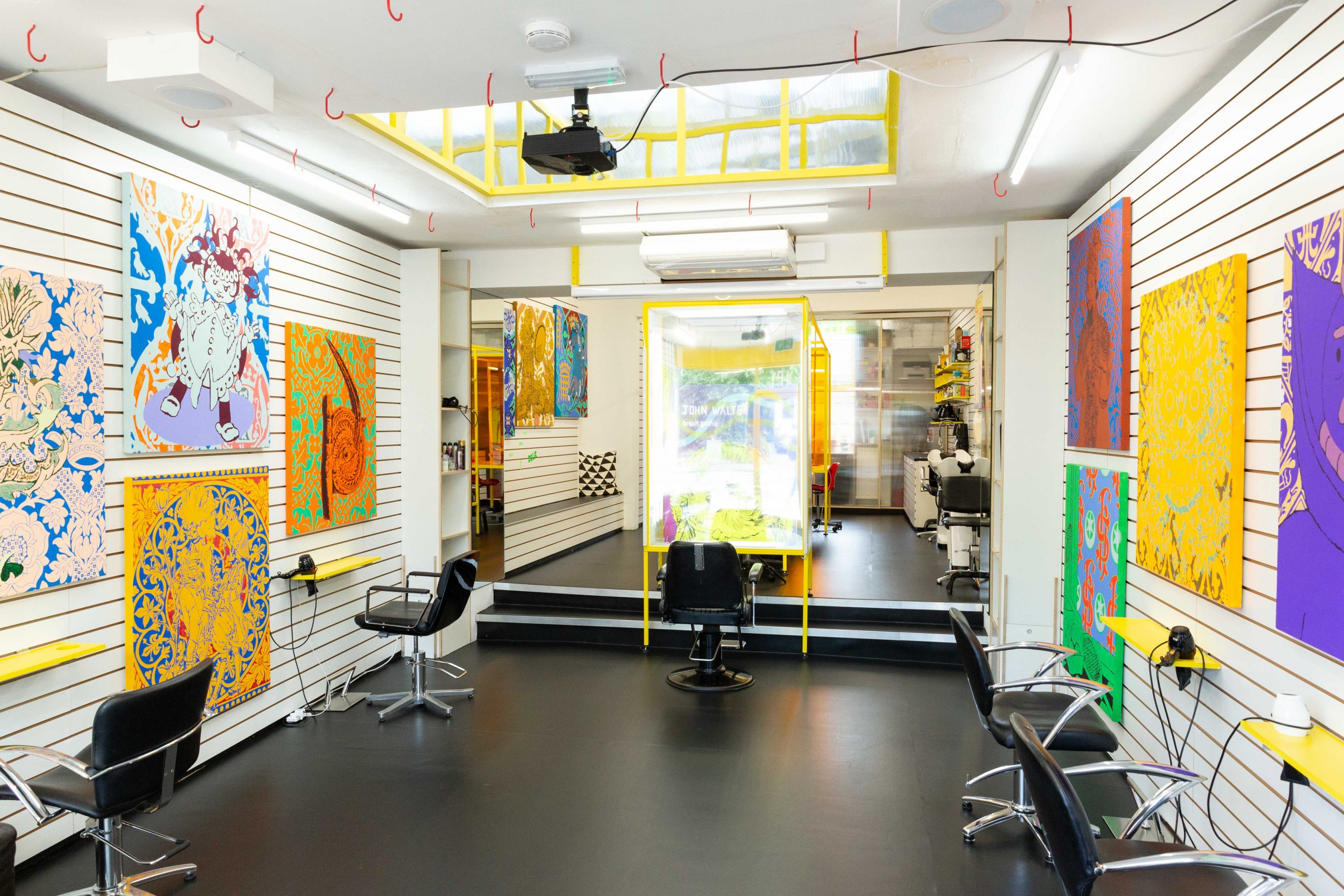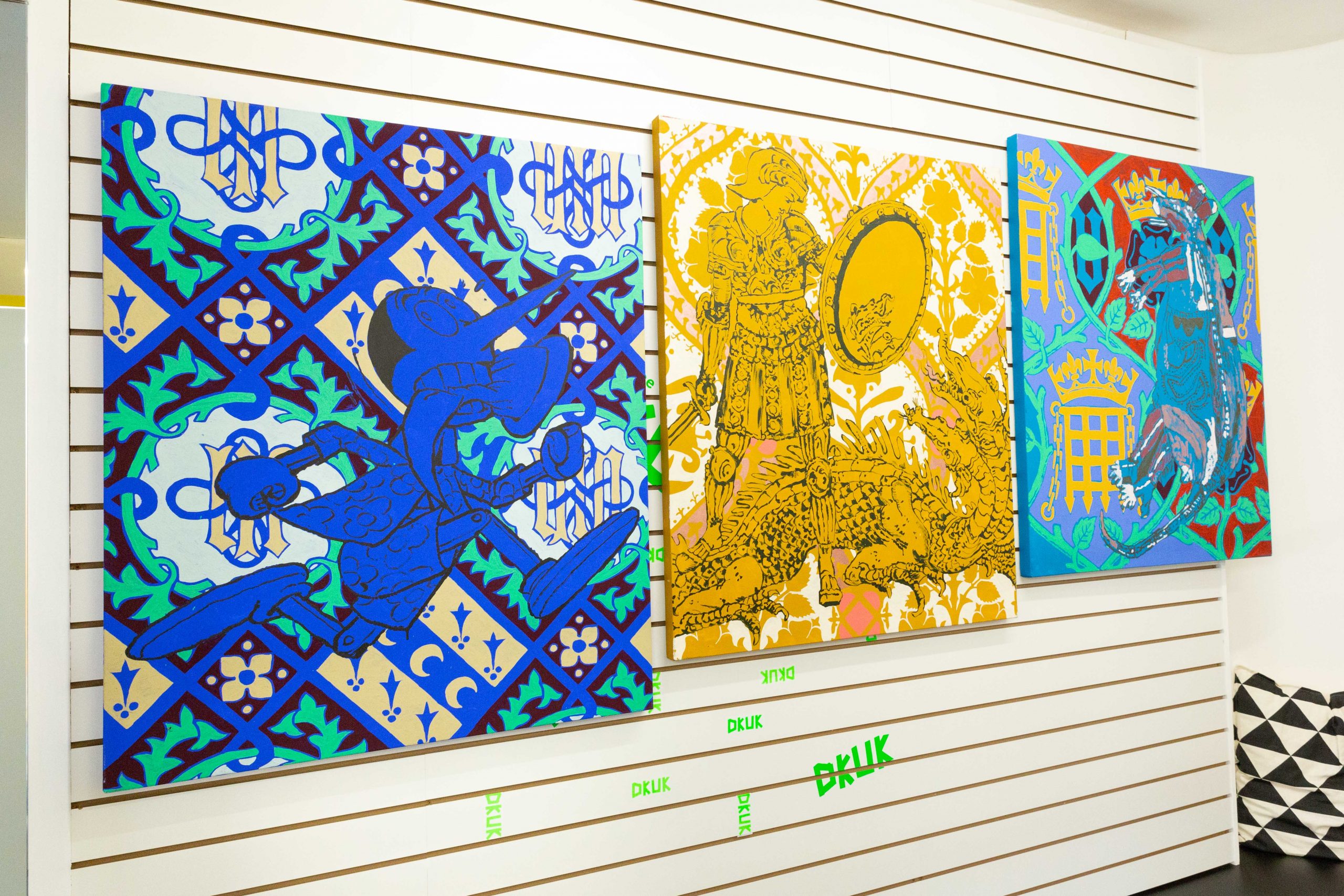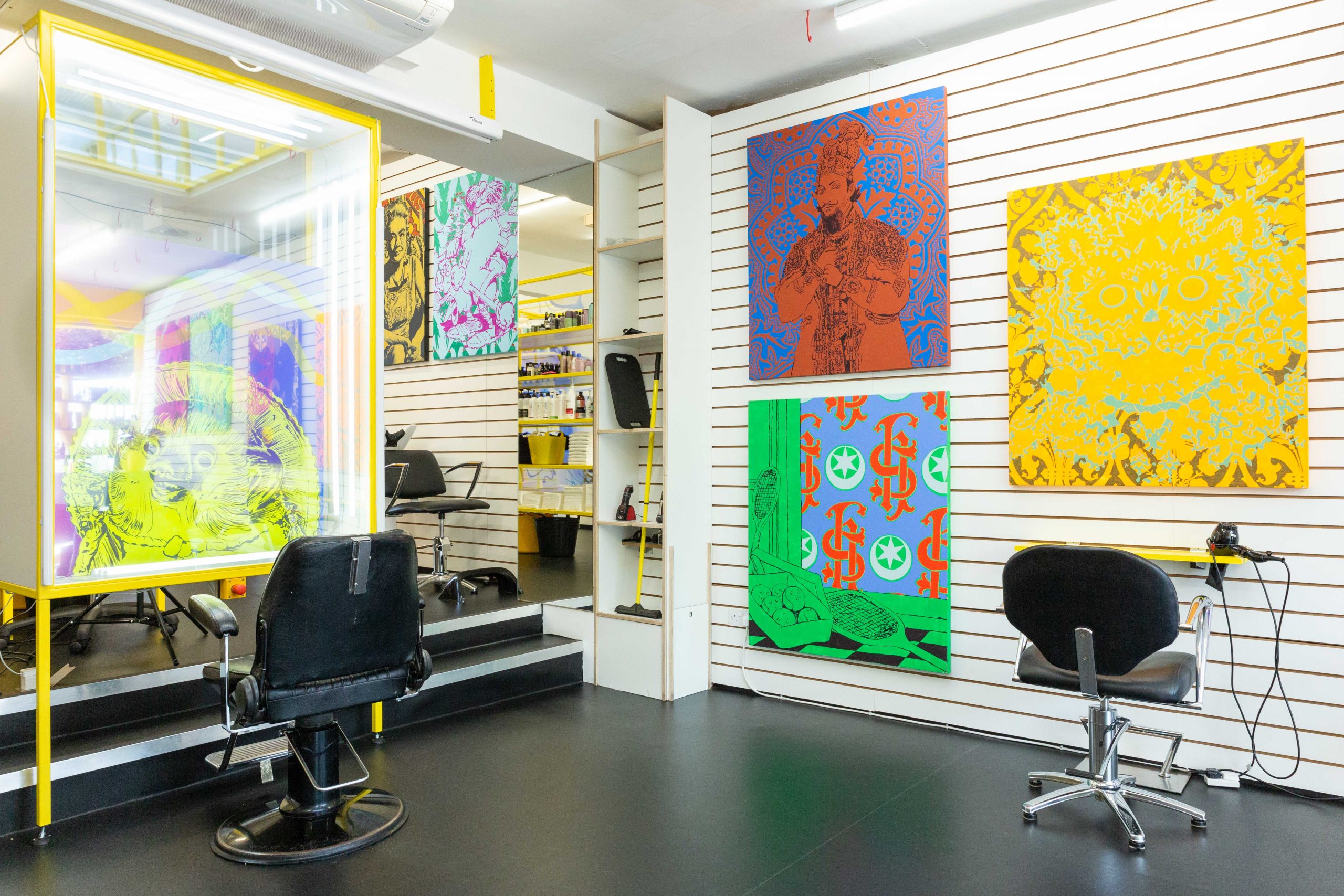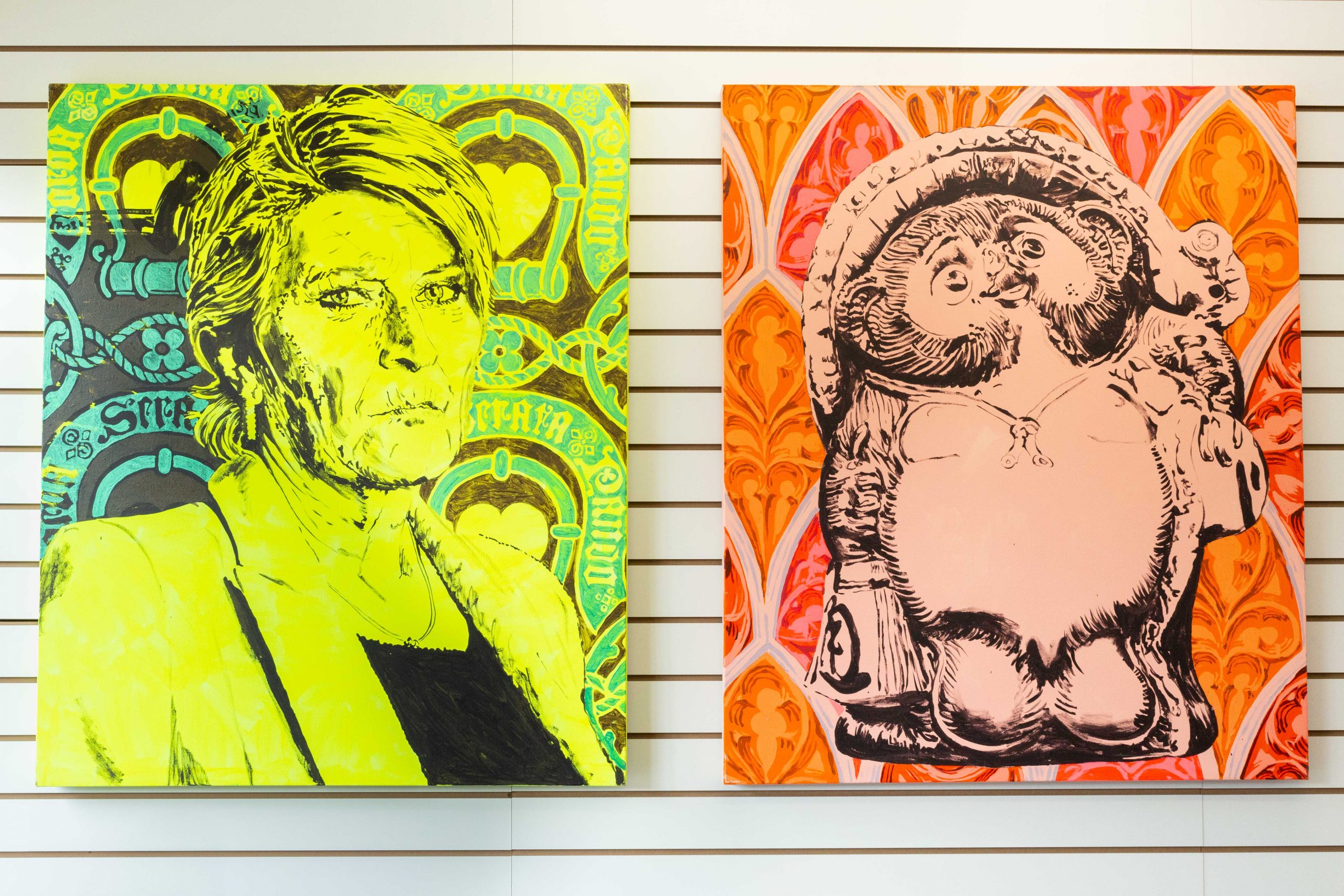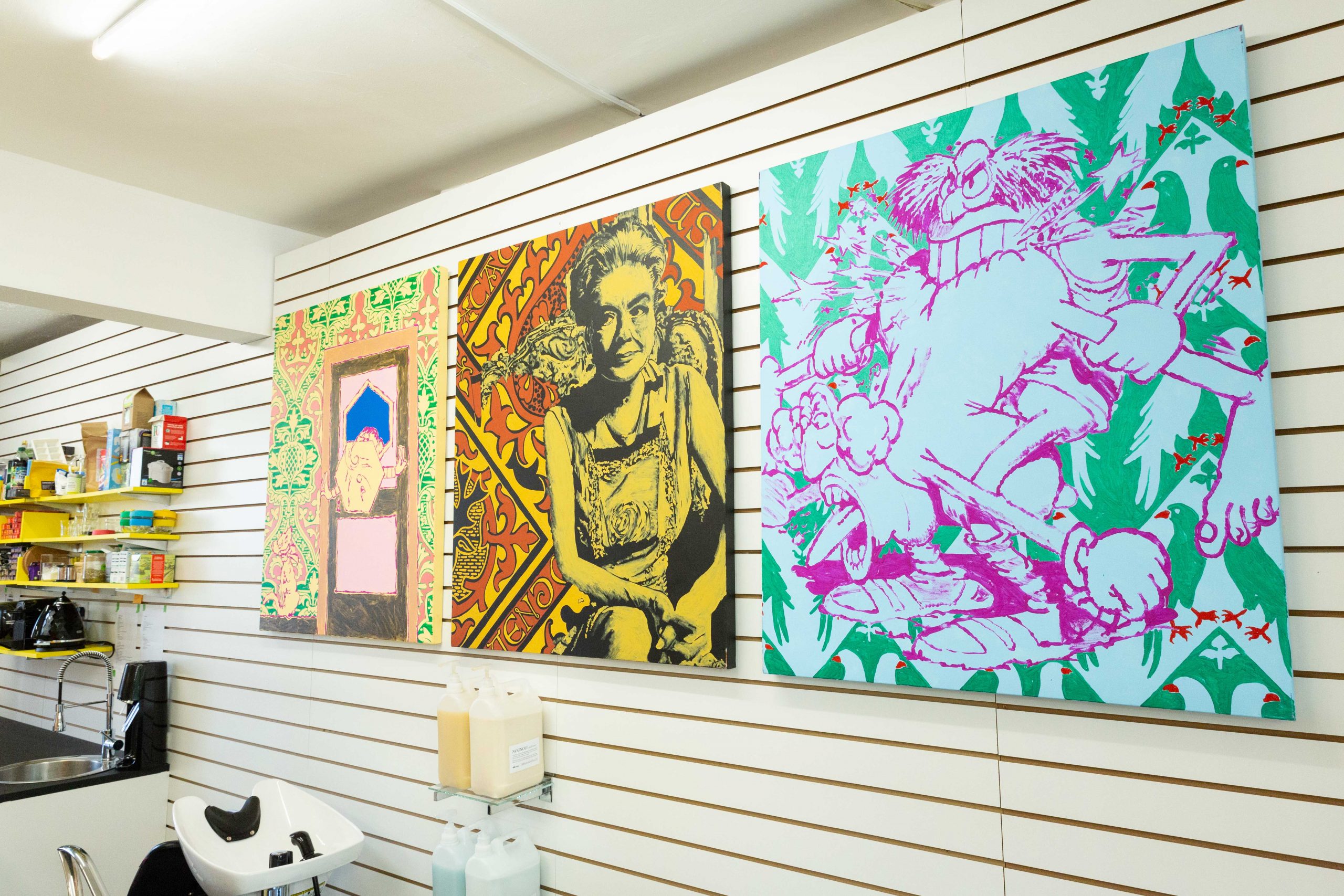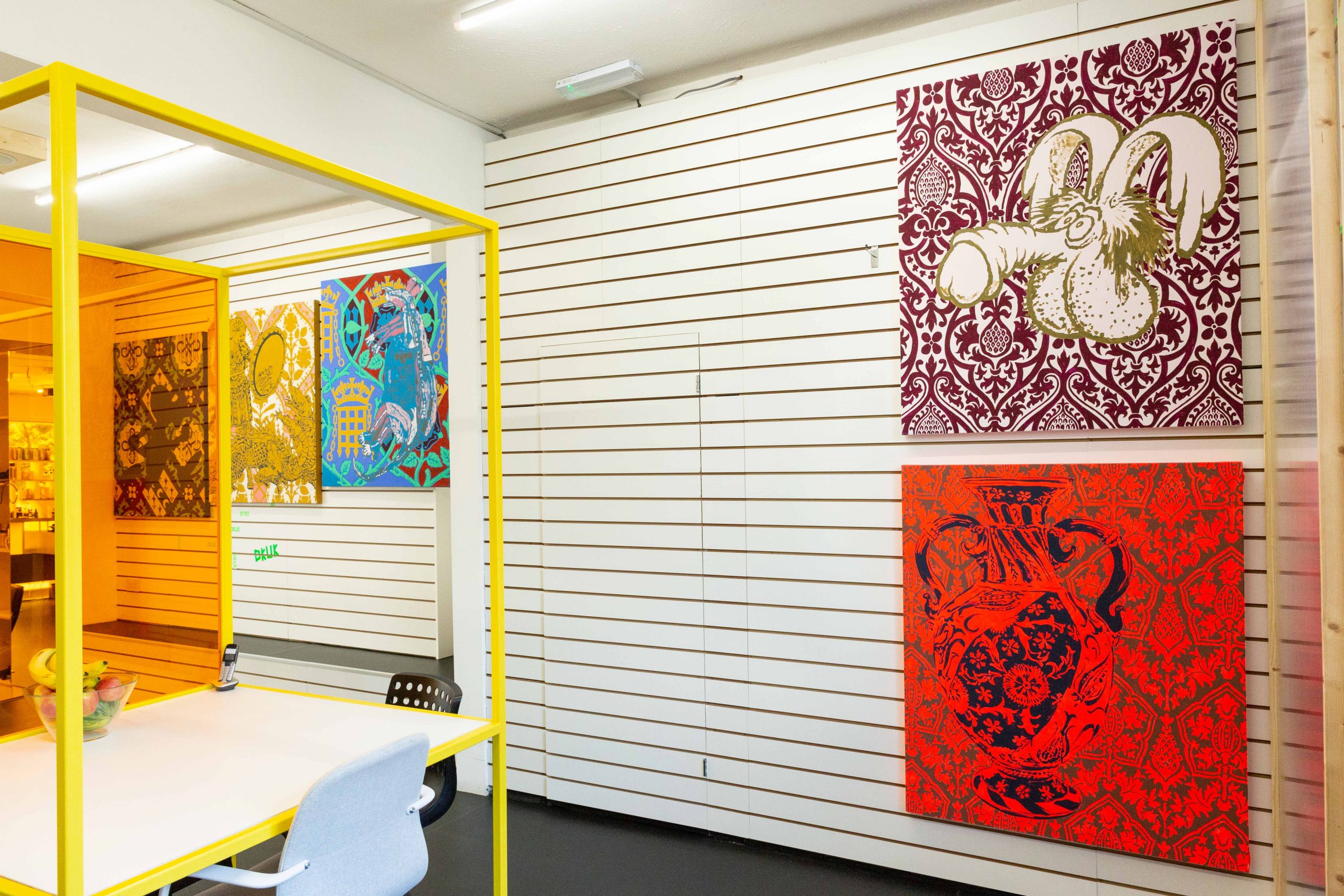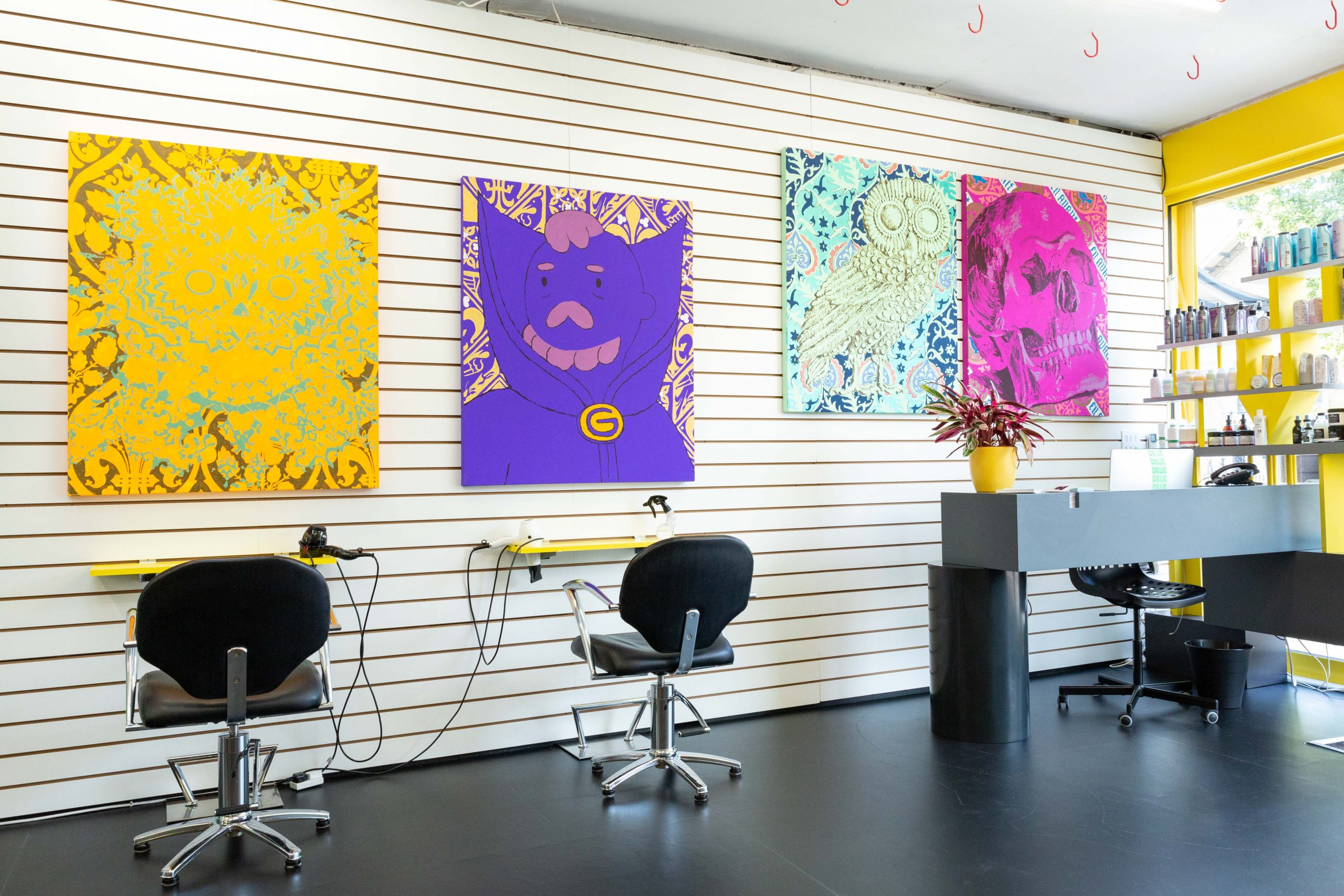brexit gothic
john walter
As Brexit fatigue is hitting a peak, it still looms large over our lives as an indeterminate with ongoing talks of returning power from the European Union to the Palace of Westminster. Artist John Walter satirises this new phase of ‘British Nationalism’ by addressing the art and architecture that underpin its philosophy, coining Brexit Gothic as the name for a style that could suitably address this new era that we have entered into.
Brexit Gothic (2019) is a new installation of twenty paintings, each combining a figure in the foreground that emerges from a pattern quoting the work of Victorian architect Augustus Pugin. Pugin pioneered the Gothic Revival style, made famous in his designs for the Palace of Westminster. The central figures in the paintings refer to a diverse range of cultural sources that include the cartoon Adventure Time; the Victorian illustrator Walter Crane; the early twentieth century Italian illustrator Antonio Rubino; the Japanese raccoon dog character Tanuki; Eastenders’ Shirley Carter; Aboriginal Australian artefacts; the paintings of royal Mughal miniaturist Ghulam Ali Khan; the Italian illustrator Benito Jacovitti; and artist Louis Wain, best known for his drawings of psychedelic cats. By using Pugin’s Gothic Revival patterns as a leitmotif for Brexit and hybridising them with other unexpected images, Walter’s paintings could offer the potential to create new narratives around Brexit that we have not yet considered.
The project develops Walter’s ongoing interest in how cultural forms are transmitted. His maximalist approach employs pattern, decoration and imagery to form narrative hooks, noting “I think there is something that happens in the act of painting in which the image is performed, re-enacted and mutated.” Walter hereby takes the meme as his unit of cultural transmission. The meme is to culture what the gene is to biology – carried by humans and increasingly by computers and other Artificial Intelligences – as proposed by Richard Dawkins in The Selfish Gene (1976). The Internet has helped popularise the idea of the meme as something that can spread rapidly via an artefact such as an image, tune or style expression. The paintings seek to give these images and patterns fresh memetic life, ready to disperse.
The stories they tell pose questions about the complex ways in which British, English, European and Global cultures have always influenced one another, be it positive, negative, upwards, downwards or sideways – something they will continue to do after Brexit.
–
John Walter’s work focuses on how painting culture enables the spread of memes. His contribution to this discussion has been informed by a deep engagement with virology and genetics. His work crosses various regions of pictorial space, using forms that include drawing, painting and artist’s books, animation, moving image and Virtual Reality.
His hybrid approach to constructing new images grows out of a culture of collage and involves linking with other disciplines and developing new relationships between practitioners – something which was particularly notable with his touring projects Alien Sex Club (Ambika P3 and Homotopia Festival, 2015) – a ‘maze’ based on gay bath houses – and Shonky: The Aesthetics of Awkwardness (Hayward Curatorial Open, 2016) – a group exhibition which celebrated how art that is hand-made, deliberately clumsy and lo-fi could be used to explore issues including gender, identity, beauty and the body.
On Thursday 31 October from 6:30pm there will be an in-conversation between John Walter and curator Gemma Lloyd.

